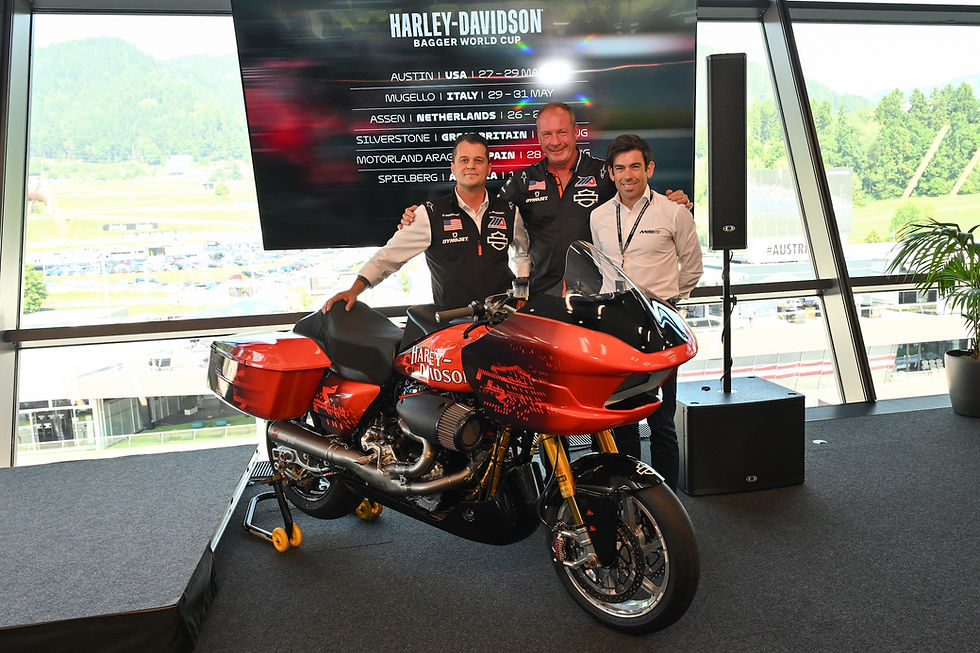2022 Suzuki Hayabusa - First Look
- MotoringPulse
- Feb 10, 2021
- 3 min read
Updated: Jul 21, 2021
The "Busa" enters a new era, the Gen 3 model is new in many ways.. yet remains true to its essence. Read to find out more..

In 1999, when the Hayabusa went past 300 km/h, it became the fastest production motorcycle by beating the Honda CBR1100XX Super Blackbird (the fastest road bike till that time). Hayabusa wasn’t just the greatest engineering marvel of that time, it was momentous. It pushed the limits of man and machine to where it was never experienced before on a production motorcycle. You can argue that this particular Suzuki has made the biggest impact on the motorcycling world.
Tell me then, how do you make something so legendary even better? Because it’s easier to ruin what’s good than to improve. And with Hayabusa, you are dealing with one of the strongest reputations in the history of motorcycles. No pressure then!
The Idea Is Not To Lose The Essence Of It

In a way, the Hayabusa is the ultimate old school sport bike with a big, burly, 1340cc inline-4 engine producing massive power and torque. Yet, it dismisses the current trend of perfect power-to-weight ratios, the magical 200 HP figure, and any kind of forced induction. And I’m truly so happy for that.
The team at Suzuki clearly knows what they are doing and they couldn’t have made better decisions with the gen3 model. During its development, the company tested various engines, from the supercharged to the inline sixes. But the results interestingly confirmed that the outgoing gen2 engine had the best overall performance and the stress-free nature it is known for. Plus, keeping it simple meant lower service costs, increased reliability, and durability.

However, there are major changes internally that make it a virtually new engine, such as the new pistons and connecting rods to reduce the weight of the moving parts. Crankshaft oil passages have been changed for improved lubrication. Reduced valve lift, increased capacity of the new air box, and the longer intake pipe achieve better low to midrange performance. Even the spray from the secondary injector, of the new dual injectors, hits a reflective plate so that the fuel enters the Twin Swirl Combustion Chamber as a fine mist. Everything is done to improve the efficiency and the performance where it matters most.
Ultimately, this became the primary objective with the updated engine without messing up the godly top end power.
Even so, the revised engine is slightly low on power and torque at 190 PS @ 9700 RPM and 150 NM @ 7000 RPM. Of course, it adheres to Euro5.
A New Package Of Electronics

Advanced ride-by-wire system along with six axis Inertial Measurement Unit are now there to deliver exceptional control and a safer riding experience. There are riding modes as well as the wheelie control, engine braking control, bi-directional quick shifter, slip-assist clutch, and traction control systems in place. And for those long, straight highways, there’s cruise control too that can be set anywhere between 31km/h and 200km/h. In stock, the Hayabusa is now more drag racing-friendly with the addition of launch control.
A hill hold control system has also been added for confident stop-n-go on an incline. The new exhausts are 2 kg lighter, which is how the whole motorcycle is lighter than before at 264 kg. The 2022 Hayabusa is a thoroughly up to date motorcycle.
Focus On Reliability and Longevity

Suzuki engineers were always clear on maintaining, and improving, the reliability and longevity of the engine. Everything was done around that. This is the biggest reason all the updates were made to the outgoing engine rather than developing a completely new unit, perhaps, with variable valve timing, a different number of cylinders or forced induction.
The new Hayabusa is the reminder that a thoroughly modern motorcycle can be built without going extreme with technology. Another key component that is unchanged is the chassis and suspension. The main frame is the same along with the swing arm while the sub-frame has been slightly revised for the new rear. The front KYB forks are unchanged as well with tweaks to the spring rate for enhanced damping and overall better handling dynamics.

The essence of the Hayabusa is in its simplicity as much as in its engineering that inspires. I’m glad Suzuki has largely retained the old engine, which only proves how good it is. But with so much electronics now, it is to be seen what effect they have on the overall riding experience. I hope the new ride-by-wire system is really good because in the GSX-R1000 and Katana, it’s said to be a bit too sensitive with on/off throttle.
The Hayabusa is one of the most remarkable and purest performance motorcycles to ride. Let’s hope it stays that way.
Suzuki has launched the 2022 Hayabusa in India at an ex-showroom price of 16.40 Lakh.




Comments